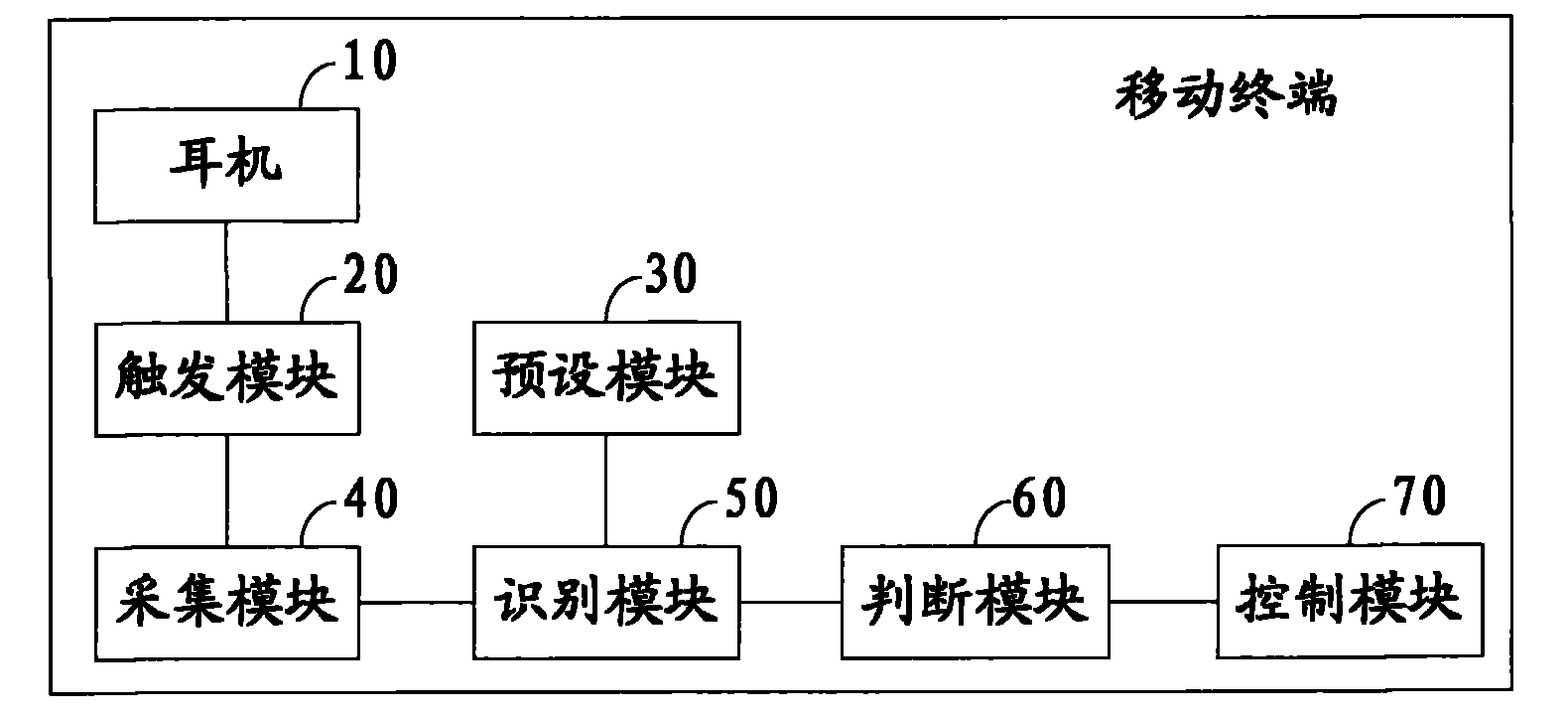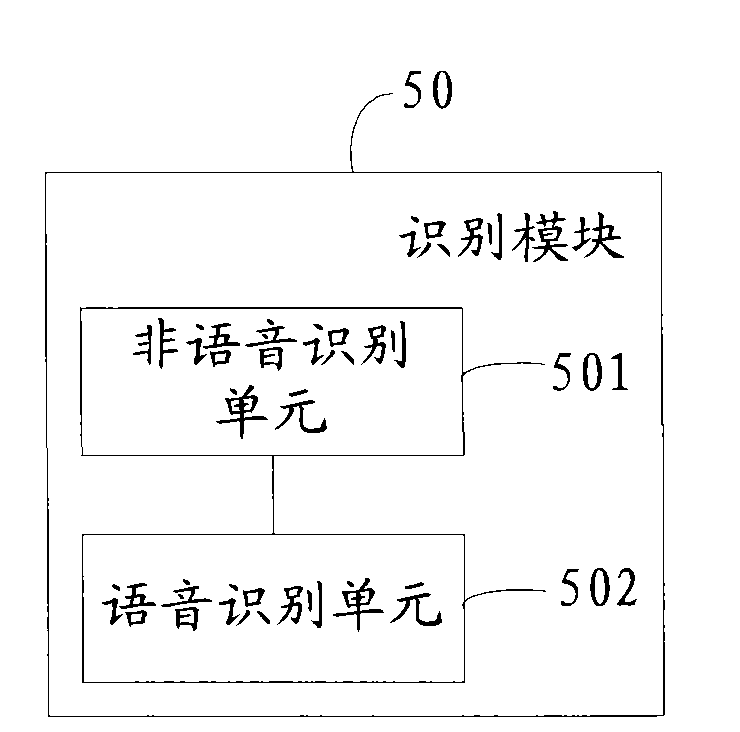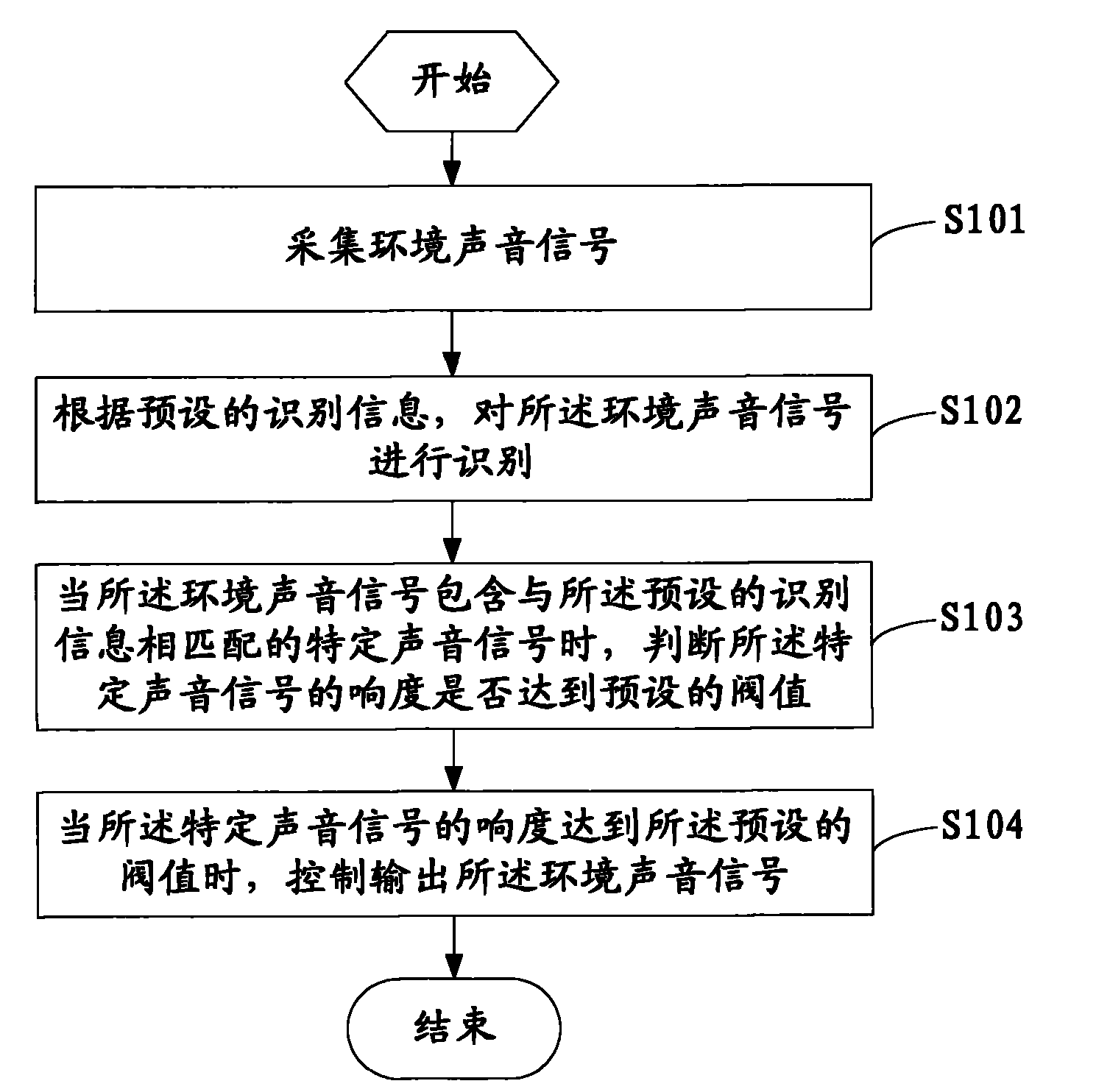Voice recognition method based on mobile terminal and mobile terminal
A mobile terminal and voice recognition technology, applied in the field of communication, can solve problems such as potential safety hazards, potential safety hazards, and damage to user social relationships, and achieve the effects of ensuring normal work, improving user experience, and improving sensing capabilities
- Summary
- Abstract
- Description
- Claims
- Application Information
AI Technical Summary
Problems solved by technology
Method used
Image
Examples
Embodiment Construction
[0029] The following will clearly and completely describe the technical solutions in the embodiments of the present invention with reference to the accompanying drawings in the embodiments of the present invention. Obviously, the described embodiments are only some, not all, embodiments of the present invention. Based on the embodiments of the present invention, all other embodiments obtained by persons of ordinary skill in the art without creative efforts fall within the protection scope of the present invention.
[0030] See figure 1 , is a schematic structural diagram of an embodiment of the mobile terminal of the present invention; as figure 1 As shown, the mobile terminal includes: a collection module 40 , an identification module 50 , a judging module 60 and a control module 70 .
[0031] The collection module 40 is used to collect environmental sound signals;
[0032] In a specific implementation, the collection module 40 is a sound pickup device for collecting sound ...
PUM
 Login to View More
Login to View More Abstract
Description
Claims
Application Information
 Login to View More
Login to View More - R&D
- Intellectual Property
- Life Sciences
- Materials
- Tech Scout
- Unparalleled Data Quality
- Higher Quality Content
- 60% Fewer Hallucinations
Browse by: Latest US Patents, China's latest patents, Technical Efficacy Thesaurus, Application Domain, Technology Topic, Popular Technical Reports.
© 2025 PatSnap. All rights reserved.Legal|Privacy policy|Modern Slavery Act Transparency Statement|Sitemap|About US| Contact US: help@patsnap.com



